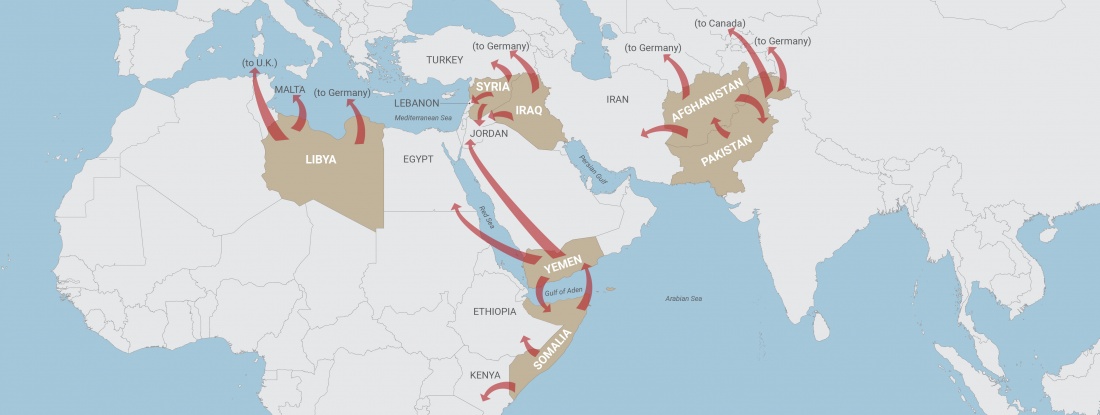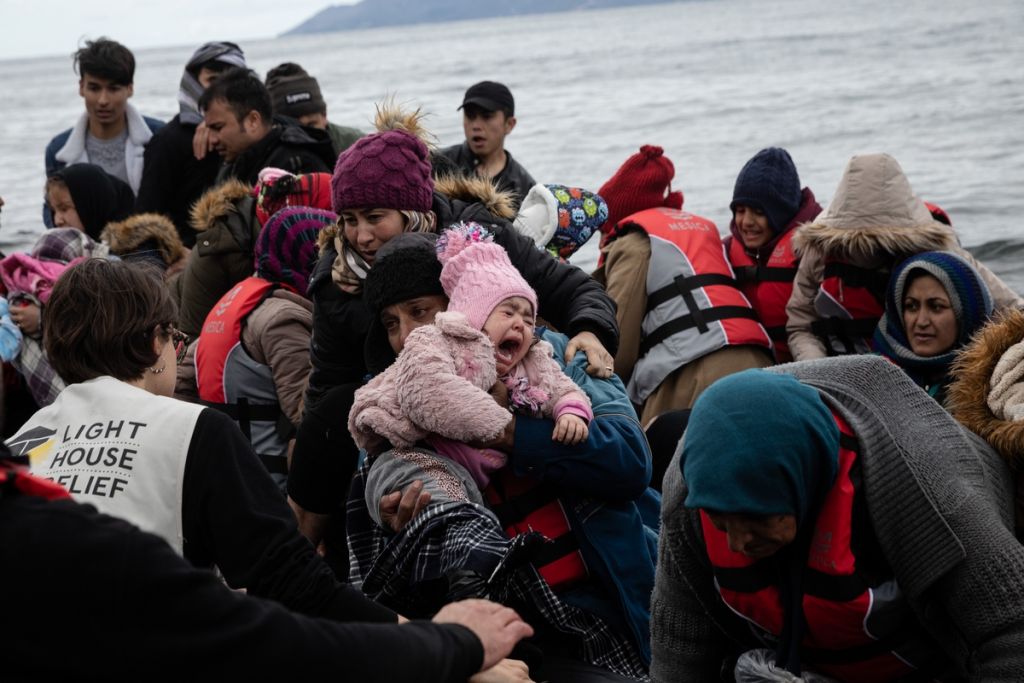 Δημιουργώντας πρόσφυγες: Ο εκτοπισμός που προκλήθηκε από τον «πολέμο κατά της τρομοκρατίας» των ΗΠΑ και των συμμάχων τους
Δημιουργώντας πρόσφυγες: Ο εκτοπισμός που προκλήθηκε από τον «πολέμο κατά της τρομοκρατίας» των ΗΠΑ και των συμμάχων τους

 37 Million Displaced by U.S. Post-9/11 Wars !
37 Million Displaced by U.S. Post-9/11 Wars !Creating Refugees: Displacement Caused by the United States’ Post-9/11 WarsDavid Vine, Cala Coffman, Katalina Khoury, Madison Lovasz, Helen Bush, Rachael Leduc, and Jennifer Walkup1
September 21, 2020
Read All Findings
Some of the Costs of War Project’s main findings include:
At least 800,000 people have died due to direct war
violence, including armed forces on all sides of the conflicts,
contractors, civilians, journalists, and humanitarian workers.
It is likely that many times more have died
indirectly in these wars, due to malnutrition, damaged infrastructure,
and environmental degradation.
Over 335,000 civilians have been killed in direct violence by all parties to these conflicts.
Over 7,000 US soldiers have died in the wars.
We do not know the full extent of how many US service members returning from these wars became injured or ill while deployed.
Many deaths and injuries among US contractors have not been reported as required by law, but it is likely that approximately 8,000 have been killed.
21 million Afghan, Iraqi, Pakistani, and Syrian people are
living as war refugees and internally displaced persons, in grossly
inadequate conditions.
The US government is conducting counterterror activities in 80 countries, vastly expanding this war across the globe.
The wars have been accompanied by erosions in civil liberties and human rights at home and abroad.
The human and economic costs of these wars will continue for decades with some costs, such as the financial costs of US veterans’ care, not peaking until mid-century.
US government funding of reconstruction efforts
in Iraq and Afghanistan has totaled over $199 billion. Most of those
funds have gone towards arming security forces in both countries. Much
of the money allocated to humanitarian relief and rebuilding civil
society has been lost to fraud, waste, and abuse.
The cost of the Iraq, Afghanistan, Pakistan, and Syria wars
totals about $6.4 trillion. This does not include future interest costs
on borrowing for the wars, which will add an estimated $8 trillion in
the next 40 years.
The ripple effects on the US economy have also been significant, including job loss and interest rate increases.
Both Iraq and Afghanistan continue to rank extremely low in global studies of political freedom.
Women in Iraq and Afghanistan are excluded from political power and experience high rates of unemployment and war widowhood.
Compelling alternatives
to war were scarcely considered in the aftermath of 9/11 or in the
discussion about war against Iraq. Some of those alternatives are still
available to the US.


Δεν υπάρχουν σχόλια:
Δημοσίευση σχολίου